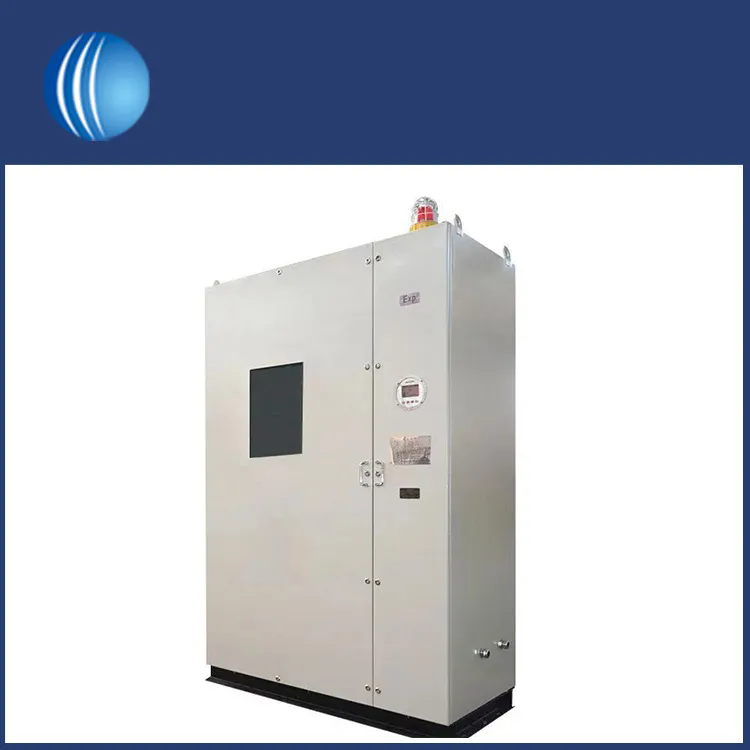Free Standing Enclosures: Essential Solutions for Equipment Protection and Organization
2024-08-16
In various industries, the need to protect sensitive equipment and ensure organized workspace management is crucial. Free standing enclosures offer a versatile solution for safeguarding electrical and electronic components, providing both protection and accessibility. This blog will explore what free standing enclosures are, their benefits, applications, and key considerations for choosing the right enclosure.
1. What Are Free Standing Enclosures?
Free standing enclosures are standalone structures designed to house and protect electrical, electronic, and mechanical equipment. Unlike wall-mounted enclosures, free standing enclosures are self-supporting and do not require attachment to walls or other structures. They are often used to organize and safeguard equipment in various environments, from industrial plants to office settings.
Key Features of Free Standing Enclosures:
- Modular Design: Many free standing enclosures feature a modular design, allowing for customization and expansion based on specific needs.
- Robust Construction: Constructed from materials such as steel, aluminum, or stainless steel to provide strength and durability. Some enclosures also include protective coatings to resist corrosion and wear.
- Ventilation and Access: Designed with ventilation options to prevent overheating and facilitate airflow. Access features such as doors and panels allow for easy maintenance and operation.
- Mounting Options: Internal mounting options for equipment such as racks, shelves, and panels to facilitate organization and accessibility.
2. Benefits of Free Standing Enclosures
Free standing enclosures offer several advantages that make them ideal for various applications:
- Protection: They provide protection against environmental factors such as dust, moisture, and temperature fluctuations, ensuring the longevity and reliability of the equipment inside.
- Security: The enclosure’s design can include locks and security features to prevent unauthorized access and tampering with sensitive equipment.
- Organization: With options for internal mounting and cable management, free standing enclosures help keep equipment organized and accessible, reducing clutter and improving workspace efficiency.
- Flexibility: The standalone nature of free standing enclosures allows for easy relocation and repositioning, making them versatile solutions for changing needs.
- Customization: Many enclosures can be customized to fit specific requirements, including size, material, and features, ensuring that they meet the unique needs of different applications.
3. Applications of Free Standing Enclosures
Free standing enclosures are used in a variety of applications across different industries:
- Industrial Facilities: Used to house control panels, electrical circuits, and other equipment in factories, manufacturing plants, and processing facilities. They provide protection in harsh environments and ensure organized equipment management.
- Data Centers: Employed to house servers, networking equipment, and other IT infrastructure. Free standing enclosures help manage cables, improve airflow, and protect sensitive equipment.
- Telecommunications: Used to protect telecommunications equipment such as switches and routers, ensuring reliable operation and protection from environmental factors.
- Commercial Buildings: Installed in office settings to house electrical panels, network equipment, and other essential systems, providing a clean and organized appearance.
- Laboratories: Used in laboratory environments to protect sensitive equipment and maintain a controlled environment for experiments and processes.
4. Key Considerations for Choosing Free Standing Enclosures
When selecting a free standing enclosure, consider the following factors to ensure it meets your needs:
- Size and Dimensions: Choose an enclosure with sufficient space to accommodate your equipment, including any future expansion needs. Consider both the internal dimensions and external footprint.
- Material: Select a material that suits the environmental conditions and protection requirements. Common materials include steel for durability, aluminum for lightweight applications, and stainless steel for corrosion resistance.
- Protection Rating: Evaluate the enclosure’s protection rating, such as IP (Ingress Protection) ratings, to ensure it provides adequate protection against dust, moisture, and other environmental factors.
- Ventilation and Cooling: Consider the need for ventilation or cooling options to prevent overheating of the equipment inside. Enclosures with built-in fans or ventilation panels may be necessary for high-heat applications.
- Accessibility and Maintenance: Ensure the enclosure provides easy access to the equipment for maintenance and operation. Features such as hinged doors, removable panels, and cable management options can enhance accessibility.
- Customization: If you have specific needs, such as custom mounting solutions or additional security features, choose an enclosure that can be customized to meet those requirements.
5. Future Trends and Innovations
The field of free standing enclosures is evolving with advancements in technology and industry demands:
- Smart Enclosures: Integration of smart technologies, such as temperature and humidity sensors, to monitor and manage the conditions inside the enclosure in real time.
- Sustainable Materials: The use of eco-friendly and recyclable materials in the construction of enclosures to support sustainability goals and reduce environmental impact.
- Enhanced Cooling Solutions: Development of advanced cooling systems, including liquid cooling and air conditioning options, to manage heat more effectively in high-performance applications.
- Modular Designs: Continued innovation in modular and scalable designs to accommodate changing needs and facilitate easy upgrades and expansions.
In conclusion, free standing enclosures are essential components for protecting and organizing equipment in various settings. Their durability, versatility, and customization options make them suitable for a wide range of applications, from industrial facilities to data centers and commercial buildings. By considering the key factors and staying informed about the latest trends, you can choose the right free standing enclosure to meet your specific needs and ensure the reliable operation of your equipment.



